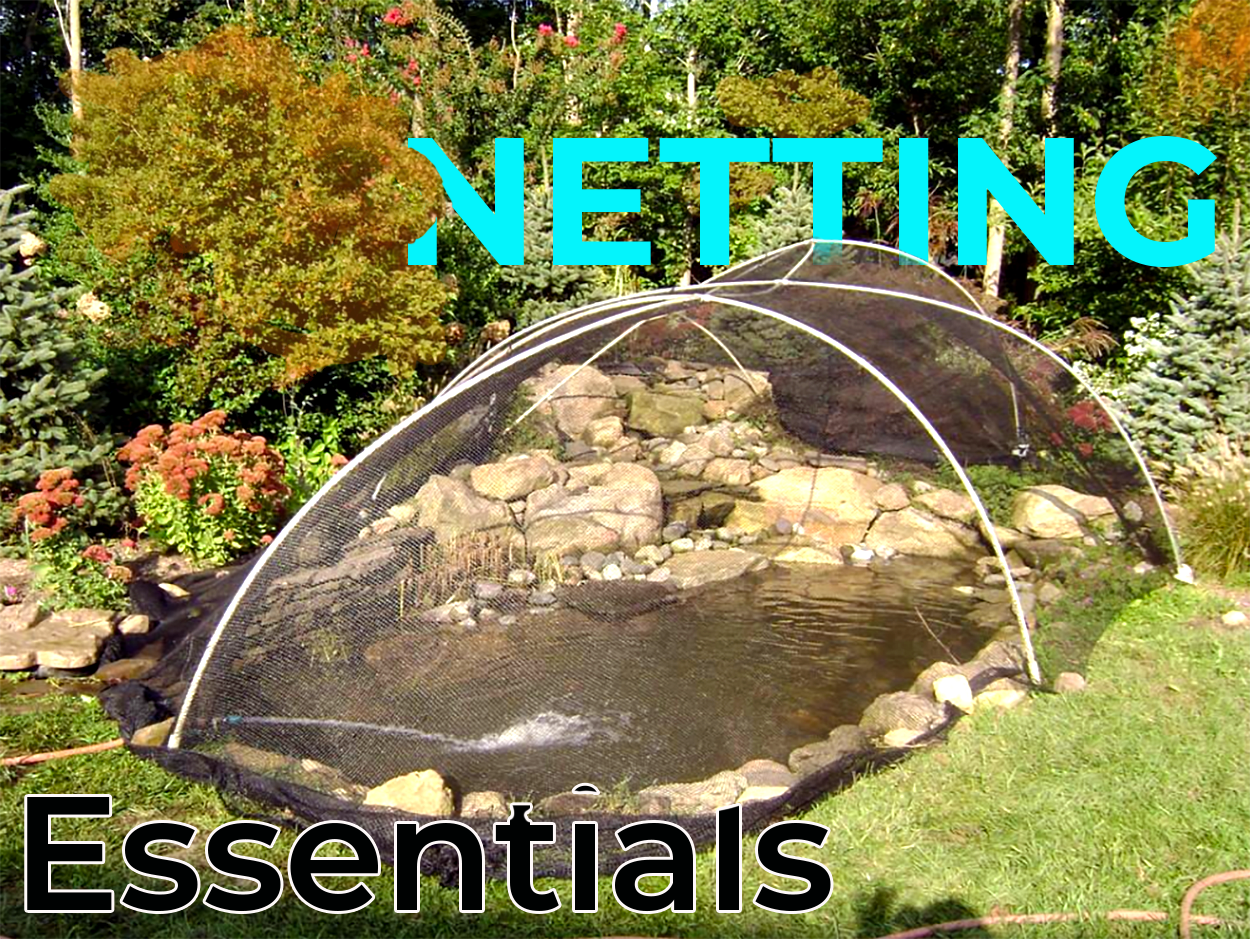
How Can I Protect My Pond with Pond Netting This Fall? 🍂
TL;DR:
Pond netting keeps leaves, debris, and predators out of your pond—protecting your fish, improving water quality, and saving you time on maintenance.
As the leaves start to fall across New Jersey, your pond becomes a magnet for debris. Without pond netting, leaves sink, rot, and release nutrients that cloud the water and stress your fish.
Here’s why adding a simple pond net this fall is one of the smartest things you can do for your pond.
1. Keep the Muck Out 🍁
Falling leaves may be pretty, but once they settle on the bottom, they decay and turn into sludge. This gunk clogs filters and feeds algae blooms in spring.
Installing pond netting now stops debris before it ever hits the water. Choose a fine mesh net that’s UV-resistant and sits a few inches above the surface.
2. Protect Your Fish from Predators 🦊
Raccoons, herons, and even cats love a good koi buffet. Pond netting acts as a simple but effective barrier to keep them away from your fish.
Many pond owners in Randolph, Mendham, and Livingston report fewer predator visits after installing nets in early fall.
3. Save Your Filters (and Your Back)
Leaves clog filters, pumps, and skimmers—forcing them to work overtime. Without pond netting, that buildup can burn out your equipment and add hours of cleanup work.
Netting saves you time and protects your investment. A quick check and leaf removal every week or two is all it takes.
4. Keep Winter Water Quality Stable ❄️
As leaves decompose under ice, they release ammonia and strip oxygen from the water. That’s dangerous for koi and goldfish during cold New Jersey winters.
Adding pond netting before freezing temps helps prevent that decay, maintaining healthier water all winter long.
5. Enjoy a Cleaner, Easier Spring Start-Up 🌷
When you pull your net off in March, your pond will be cleaner and clearer. You’ll spend less time vacuuming sludge and more time enjoying your fish.
Simply put: pond netting in fall means less mess in spring.
How to Install Pond Netting (Step-by-Step)
-
Measure your pond. Add at least a foot of overlap on each side.
-
Pick the right net. Fine mesh, UV-resistant, ¼” holes recommended.
-
Add supports. Stakes or PVC arches help keep the net off the surface.
-
Secure the edges. Use landscape pins, bricks, or decorative rocks.
-
Check weekly. Remove excess leaves and tighten loose corners.
Bonus Tip 💡
After storms—especially in Passaic County or along the Somerset treelines—check for sagging. Wet leaves get heavy fast, and a sagging net can drop debris right into the pond.
Why It Matters
Skipping pond netting might not seem like a big deal now, but it leads to cloudy water, bad smells, and extra maintenance later. A simple net saves time, protects your fish, and keeps your ecosystem balanced through every New Jersey season.
Need Help with Fall Pond Netting?
Our team at Fish Pond Builders New Jersey can handle everything from pond netting installation to koi pond maintenance and fall cleanouts.
Contact us to schedule your pond netting service ➜
❓FAQ
Q: When should I install pond netting in New Jersey?
A: Late September through early November is best. In Morristown or Millburn, start by mid-October before peak leaf drop.
Q: Can I leave pond netting on all winter?
A: Yes, just check for sagging or snow buildup—especially in colder towns like Randolph or Mendham.
Q: What if I didn’t install pond netting this year?
A: Schedule a pond cleaning in Essex County or Morris County before freezing weather. Our crew can also assist with koi pond maintenance in Passaic County and nearby areas.
Author: Atlantis Water Gardens Team
Updated: October 2025
Location: Morris County, New Jersey
Looking for more great tips, tricks and quality content? Check out our YouTube Channel!
Looking for more tips and tricks for your New Jersey pond or water feature?
How can I do fall pond maintenance in New Jersey? 7 steps